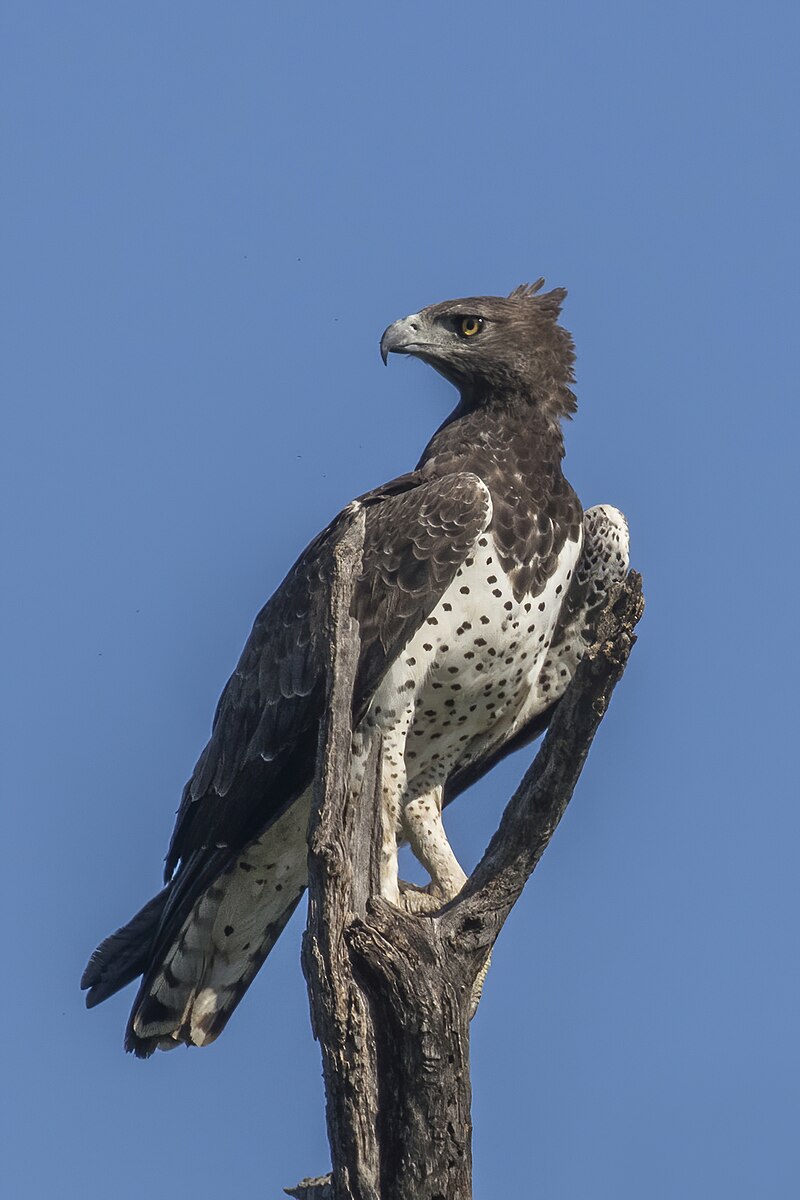Martial eagles, also known as Polemaetus bellicosus, are not cold-blooded. They are warm-blooded birds of prey, which means they maintain a consistent body temperature and can regulate it internally. These impressive raptors are the largest eagles in Africa, known for their powerful hunting abilities and impressive flying skills.
What is the Body Temperature of Martial Eagles?
Martial eagles, like other birds, are endothermic, meaning they can regulate their own body temperature. Their average body temperature ranges from 40°C to 42°C (104°F to 108°F), which is higher than the average human body temperature of 37°C (98.6°F).
This ability to maintain a consistent body temperature is a key characteristic of warm-blooded animals, as it allows them to function optimally in a variety of environmental conditions. Martial eagles can adjust their metabolism and physiological processes to maintain this optimal body temperature, even in the face of changing ambient temperatures.
Hunting Strategies of Martial Eagles
 Image source: Martial eagle by Charles J. Sharp
Image source: Martial eagle by Charles J. Sharp
Martial eagles are apex predators in their native habitats, primarily hunting medium-sized mammals such as hares, small antelopes, and even young livestock. Their hunting strategies are a testament to their impressive physical capabilities and adaptations.
Soaring and Gliding
Martial eagles are known for their exceptional flying abilities, which they use to their advantage when hunting. They are capable of soaring and gliding for long periods, using their broad wings and wedge-shaped tails to conserve energy and scan the landscape for potential prey.
Powerful Talons and Beak
These eagles possess powerful talons and a sharp, hooked beak, which they use to capture and kill their prey. Their talons can exert a grip force of up to 400 pounds per square inch, allowing them to easily subdue and carry off even relatively large animals.
Aerial Attacks
Martial eagles often launch their attacks from the air, swooping down on their unsuspecting prey with incredible speed and precision. They may also perch on high vantage points, such as trees or cliffs, and wait patiently for the right moment to strike.
Habitat and Distribution of Martial Eagles
Martial eagles are found throughout sub-Saharan Africa, with the exception of the rainforests of the Congo Basin and the west coast of the continent. They prefer open habitats, such as savannas and grasslands, and are often found near water sources.
These eagles are known to be territorial and may defend their hunting grounds aggressively, particularly during the breeding season. They typically build large, stick nests high up in trees or on rocky cliffs, where they lay and incubate their eggs.
Conservation Status and Threats
Despite their impressive size and hunting abilities, martial eagles are considered vulnerable due to a variety of threats, including:
-
Habitat loss: The conversion of their natural habitats to agricultural land, urban development, and other human activities has led to a decline in their population.
-
Persecution: These eagles are sometimes targeted by livestock owners who view them as a threat to their animals, leading to their persecution and killing.
-
Collisions with power lines: Martial eagles are at risk of colliding with power lines and other infrastructure, which can result in injury or death.
Conservation efforts are underway to protect these majestic birds, including habitat preservation, anti-poaching measures, and public education campaigns to raise awareness about the importance of these apex predators in their ecosystems.
Conclusion
In conclusion, martial eagles are not cold-blooded, but rather warm-blooded birds of prey that can regulate their body temperature and adapt to a variety of environmental conditions. Their impressive hunting strategies, physical capabilities, and ecological importance make them a fascinating and valuable part of the African ecosystem. By understanding and protecting these magnificent birds, we can ensure their continued survival and the health of the natural world they inhabit.
References:
- “Wedge-tailed eagle.” Wikipedia, Wikimedia Foundation, 16 Apr. 2024, en.wikipedia.org/wiki/Wedge-tailed_eagle.
- “Martial Eagle.” African Wildlife Foundation, www.awf.org/wildlife-conservation/martial-eagle.
- “Wedge-tailed Eagle (Aquila audax).” Australian Museum, Australian Museum, 16 Apr. 2024, australianmuseum.net.au/learn/animals/birds/wedge-tailed-eagle/.

